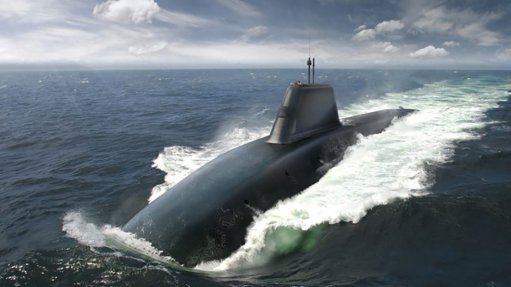
An artist’s impression of a Dreadnought-class submarine
Photo by: BAE Systems
UK-based global major defence industrial group BAE Systems has reported that it is adapting flight control systems for use in the UK’s next generation submarines, the Dreadnought-class. Submarines, like aircraft, manoeuvre through three dimensions and not, as surface ships do, only in two dimensions.
There will be four Dreadnought-class vessels (HMS Dreadnought, Valiant, Warspite, and King George VI), each of which will be 152.9 m in length and will have a submerged displacement of 17 200 t, making them the largest submarines ever constructed for the UK Royal Navy. Each will have a crew of 130. To give an idea of scale, the South African Navy’s Manthatisi-class (Type 209) conventional submarines each have a submerged displacement of 1 600 t and a crew of 30.
BAE Systems originated as an aerospace company and the group’s wide-ranging portfolio includes advanced combat aircraft. Consequently, it has enormous experience in ‘fly-by-wire’ advanced flight control systems.
“With over 50 years of avionics experience, we already have a great understanding of how to develop complex control systems for high-tech platforms,” highlighted BAE Systems Controls and Avionics director for maritime controls Jan Tucker. “However, taking our technology underwater brings exciting new challenges and we are proud to support the Dreadnought programme and play an important part in our national security effort.”
With fly-by-wire, electronic systems control the movement of the aircraft. BAE Systems engineers are now developing equivalent electronic systems to control the heading, pitch, depth and – something not required in an aircraft – buoyancy of the future submarines, as well as other key systems.
The new control system has been designated the Active Vehicle Control Management system. Already, 130 highly-skilled personnel are working on the project, and the number is expected to grow.
The Dreadnought-class will be nuclear-propelled ballistic missile submarines (SSBNs in naval jargon) and will be the future carriers of the UK’s nuclear deterrent missiles. They will replace the current Vanguard-class SSBNs, with the first entering service in the early 2030s, and they are expected to have a service life of at least 30 years.